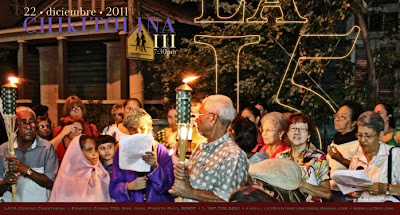http://www.la15pr.org/home.html
An irreverent critique that approximates a legitimate hermeneutical exercise, this show is an invitation to reevaluate the importance of the action of interpreting art history and more specifically the history of abstract art. Very much in the essence of the spirit of art, the artists recur to the artifice to speak about aesthetic and theoretical truths.
In painting geometric abstraction is seen as the apex of nonobjective art, relentlessly reminding us of painting’s two-dimensional nature as a medium. Kandinsky and Malevich are found among some of the forerunners of pure nonobjective painting, and figures like the members of the original Abstract Expressionist troupe, Hans Hoffmann, Agnes Martin, Phillip Guston and Helen Frankenthaler carried this artistic medium through the transition from the early Modern definition of the painterly style to the contemporary articulate visual idiom that it is today. Currently artists like Merlin Carpenter, Sarah Morris and Julie Mehretu among a plethora of other artists continue to explore the vast theoretical and aesthetic expanse of this discourse, and to it they contribute ever changing paradigms that serve to exacerbate our deep connection with the notions behind abstract art. The term ‘post painterly abstraction’ I rip right out of the Clement Greenberg’s fleshy body of work, a term coined to forever signify an act of human intelligence; a reflex of a painter who seeks not just appropriation of abstract techniques but who also want to make a contribution to the exploration of the nonobjective.
In Rafael Miranda-Mattei and Walter Fernández’s most recent show there is a kind of visual archaeology of the history of abstract art, and from their hybrid style of hard edge, drip, gestural strokes and staining they communicate a sort of clash or colliding duality in their interpretation. This last comment is a connecting thread between their earlier individual work and this duo show; the sardonic and yet often enough laconic approach to the history of painting and conceptual art is pervasive all throughout their work.
Miranda-Mattei and Fernández zero in on the history and context of Russian Constructivism with the idea of reopening their case under a new light, the blazing Sun of the Caribbean. The tenets of the eastern European art movement are subjected to a reappraisal; a hermeneutical critique informed by the sociopolitical reality of Puerto Rico. According to Miranda-Mattei the criticism is mainly targeted at functionaries of the art world who “resist a deeper scrutiny of our history of art and who refuse to expand our aesthetic theoretical frontiers”, perhaps in order to enable our integration to the history of art of the rest of the continent; into the ranks of artists and cultural dispensers that shape the contemporary art world in our part of the world.
The appropriation of a Constructivist aesthete may perhaps speak to the arrest of the culture and art exhibition spaces in our island, by our corrupt and privatizing government on the one hand and on the other the thievery of the art dealers and gallerists. Dividing these two very unfriendly forces is a thin line populated by independent agents operating still emergent spaces (Art Lab, cart Watch, ÁREA, etc.) and proactive cultural dispensers. The exhibit makes no real threat to the art macrostructure but it does invite to further discuss the parallelisms between Russian art history and our own, certainly we at least share the existence of groups of artists devoted to social cause (DIVEDCO and the generation of ’50).
The original constructivists sought to revolutionize art in their historical moment, and deployed cultural and social forces that have reverberated throughout the history of so many other cultures, and it is from the inheritance of that aesthetic and theoretical trove from which Miranda-Mattei and Fernández pull out these new series of works.
Bravo Art Lab for a great show.
Ralph Vázquez-Concepción
Conboca Curator, Artist and Journalist
























